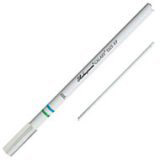GPS Units - Accessories
Autopilots - Marine
Cameras
Chart Plotters
Communications
Dash Cameras
EPIRBs & PLBs
Fitness, Sports & Golf
Fishfinders
Garmin Fitness
GPS-Fishfinders
GPS-GMRS Radios
Maps & Software
Hiking & Handheld GPS
Wearables
Laptop & Tablet GPS
Marine Electronics
Motorcycle Units
Network Systems
Off Road GPS
Radars
Safety Equipment
Starlink Mounts
Stereos & Speakers
Top Choice Products
Tracking Devices
Trolling Motors
Truck & RV GPS
VHF Radios
Accessories
Garmin Accessories
Marine Accessories
Transducers
Actisense
B&G
BilgeBuddy
C-Map Charts
CMOR Charts
Flir Thermal Imaging
Fujinon Marine Binoculars
Furuno Marine Electronics
Fusion Stereos
Garmin GPS
Icom Marine Radios
JL Audio
KVH Satellite TV
Lowrance Electronics
Lumishore LED Lights
Magellan GPS Systems
Navionics Charts
Ocean Signal
Pelican Lights
Poly Planar Stereos
Raymarine Electronics
Scanstrut
Seaview Mounts
Shakespeare
Simrad Marine
Sionyx
Si-Tex Marine Electronics
Standard Horizon
Superior Life Saving Life Rafts
USGlobalSat
Veratron
Vesper Marine
How To Select The Right VHF Radio Antenna For Your Boat

When you are out boating, and an emergency strikes, a VHF radio can be your best friend. Very often, a radio is the only means of communication between the shore and the sea, for cell phone service is generally limited. That is why it is important to select the proper VHF marine radio antenna for your boat.
When choosing a VHF antenna, you will need to strike a balance between size, gain and cost. Your antenna, after all, is the key to getting good reception. The most expensive VHF marine radio in the world is of absolutely no use if you do not give it a good antenna. A key point to remember when purchasing an antenna is that the higher the antenna, the greater the radio range.
VHF radios are constructed from stainless steel or fiberglass. Short stainless steel antennas are optimal for mounting on mastheads because they generate less windage and deliver the appropriated radiation pattern required by a heeling sea craft. Small power boats often use these antennas because of their durability. Fiberglass antennas are not quite as durable. For high-end uses where the maximum range and durability are critical—such as on the open sea—polyurethane-coated antennas are recommended. These antennas use stainless steel ferrules, combined with brass and copper elements, to provide maximum efficiency and range. They typically last for five to ten years.
Antenna height, more than anything else, determines the distance you will be able to transmit radio signals. The higher an antenna is mounted on a ship, the further it can "see" over the horizon. Antenna gain is the next most important feature. If several otherwise equal radios try to access one particular receiver, the radio with the highest-gain antenna will win.
VHF antennas are a very important part of your VHF radio installation, and understanding how to select the right antenna for your radio can be of great assistance in your communications with other boaters and shore-based stations. The primary purpose of a VHF marine radio antenna is to provide a radiator for your radio's transmitter, and to radiate the energy your radio generates in the right direction. Antennas must be enclosed in a weather-safe enclosure (or be constructed out of weather-resistant material) in order to resist the damaging forces which are generated by a boat smashing through heavy seas.
An antenna's dB rating (or antenna gain) is one of the most important points to consider when selecting your radio antenna. The dB ratting is the apparent increase in transmitting power due to the power of the focused energy. If your antenna has a high dB rating, this means that it concentrates energy perpendicular to the antenna's shaft in a disk-shaped field. The shape of this field makes the radio signal appear to be stronger by the receiving stations nearby. The dB rating also reduces the amount of energy transmitted below or above the antenna. This is a great help in pitching or rolling seas because it enables you to stay connected to as many channels as possible. Even concentrated radio signals fade in and out in rolling seas, so getting a VHF radio antenna that has a high dB rating will help you to stay connected longer. As the dB rating of an antenna increases, the height does as well, although the horizontal angle diminishes proportionately. The broad radiation pattern from a high dB antenna allows you continue to send radio messages while your sailboat is heeling over in rough waters.
A common question asked by those interested in purchasing a VHF radio antenna is whether it is necessary to match the antenna gain in dB to the loss caused by the coaxial cable within the antenna. The answer is quite simple. A 3 dB gain increase means a doubling of signal strength, a 6 dB gain increase is fourfold and a 9 dB increase is eightfold. The number of watts transmitted does not actually increase; the power is simply more concentrated.
Coaxial cable, on the other hand, loses energy with every foot of length. For every 49 feet of cable length, coaxial cable loses 3 dB. This means that if you have a 49 foot length of cable, your radio is going to sound as if it's transmitting with 12.5 watts of power instead of 25 watts. If you use a 98 foot length of cable, it will sound like a six-watt radio. Therefore, matching antenna gain to coaxial cable length is sort of a trade off; you will have to determine what is best for you based on the size of your boat, the height of your mast, and so on.












